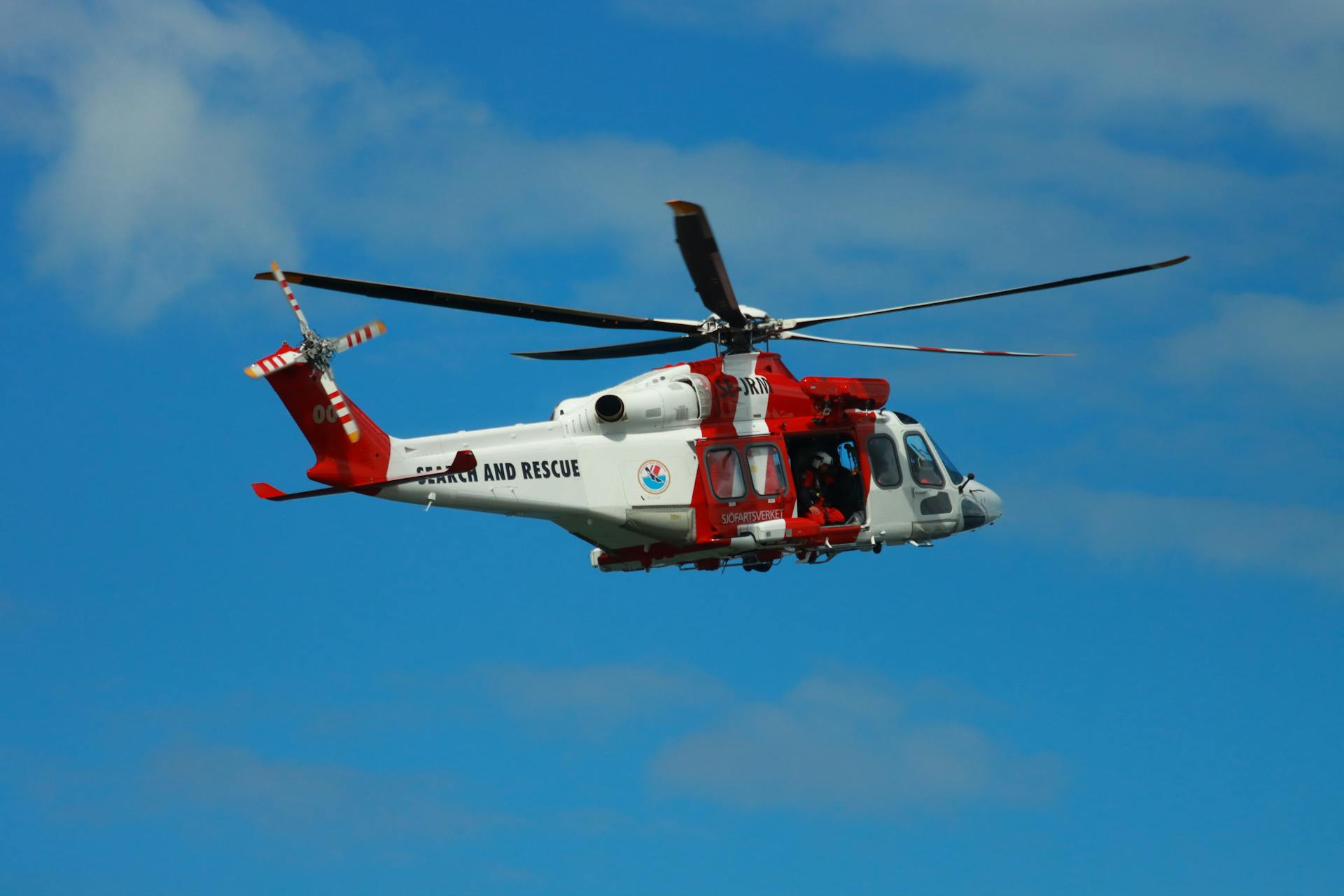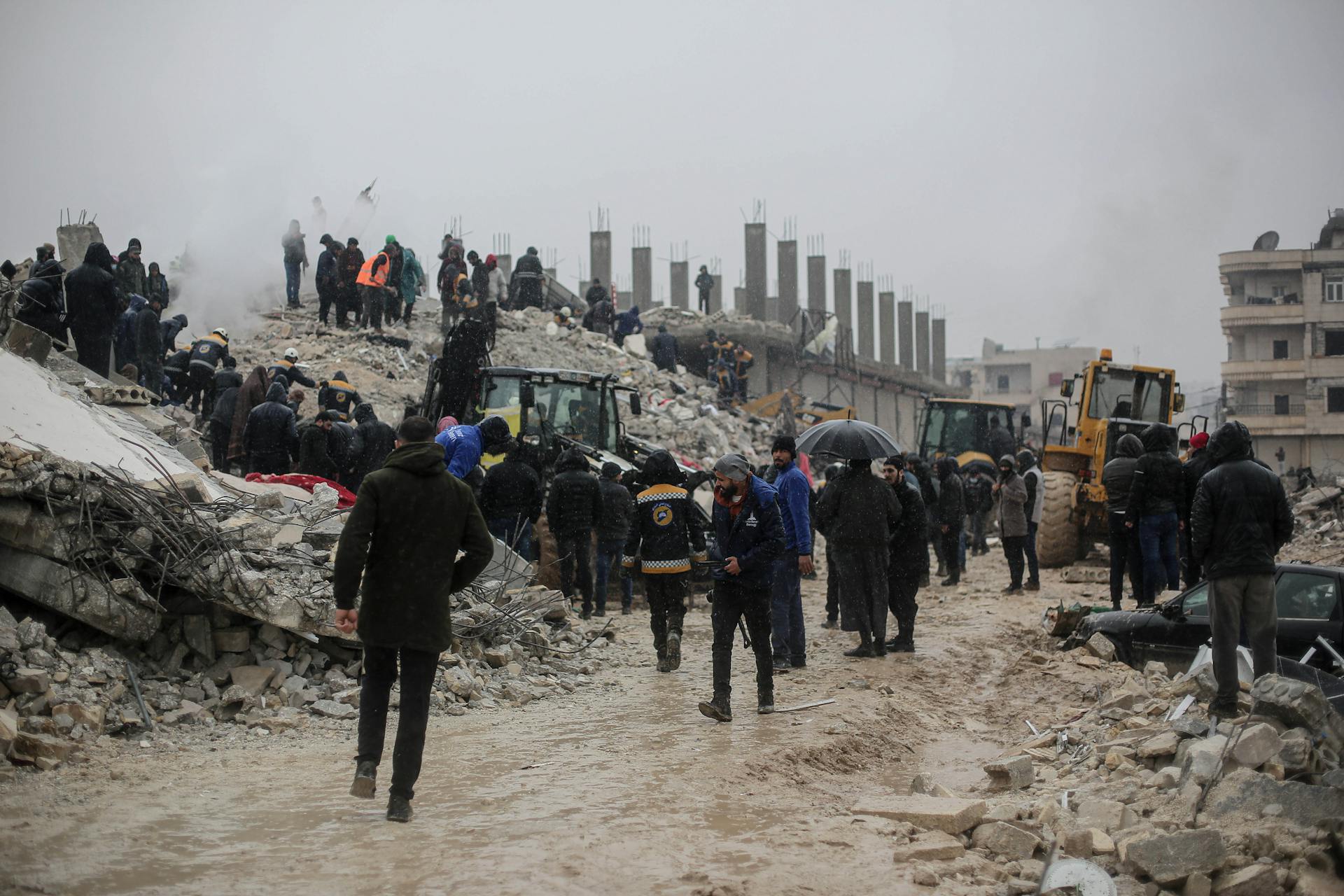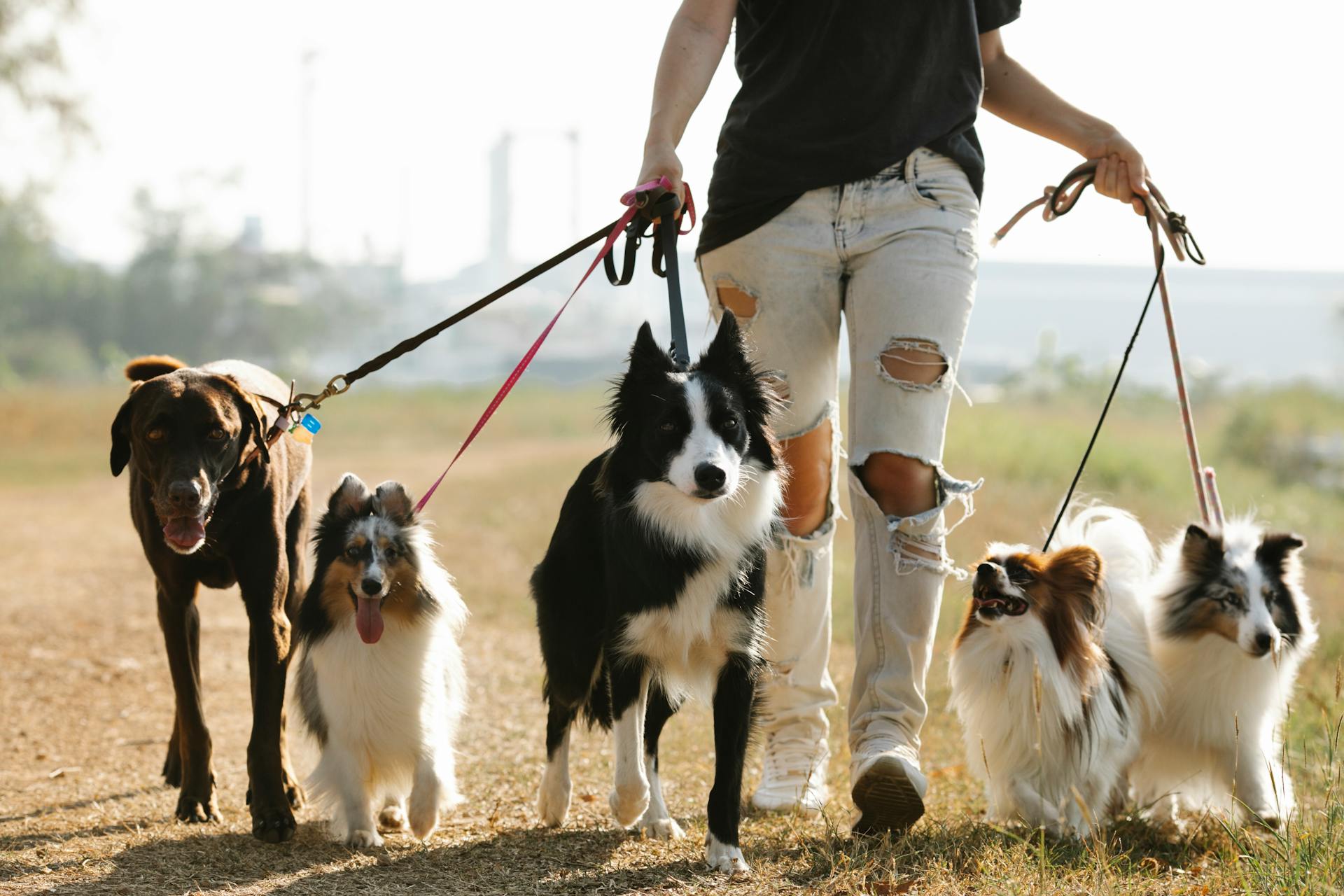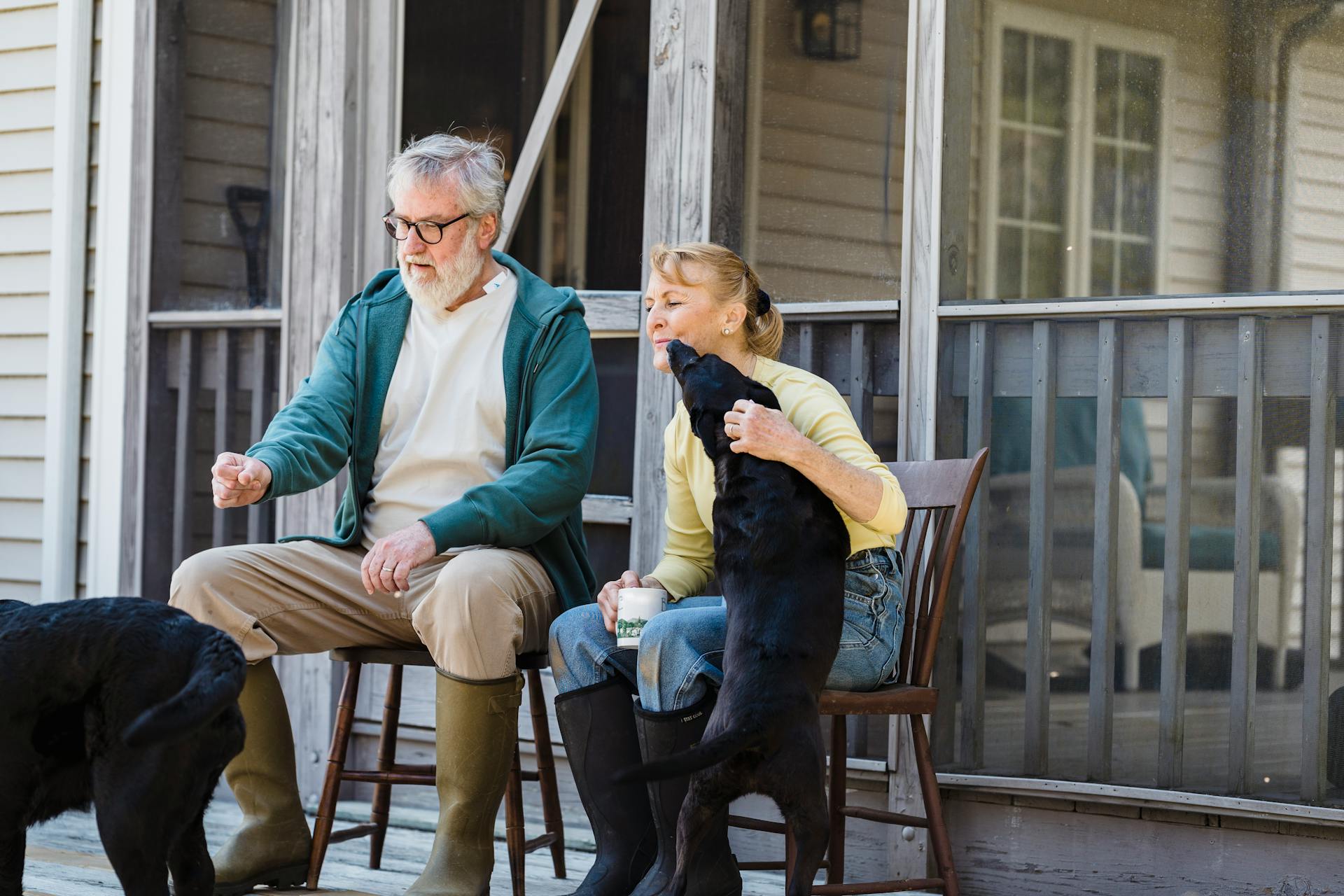
Search and rescue dogs are trained to detect human scents in a variety of environments, including wilderness areas and disaster zones. They can locate survivors within a 20- to 30-foot radius.
These dogs are often trained to follow a specific scent, such as a missing person's clothing or personal item. Their keen sense of smell allows them to pinpoint the location of the scent, even if it's been hours since the person was last seen.
Search and rescue dogs are typically trained to work in teams with their human handlers, who provide guidance and support during searches.
Worth a look: How to Teach a Dog to Search by Scent
Rescue Dogs History
Rescue dogs have a rich history that spans centuries. They've been saving lives for thousands of years, with documented instances dating back to the early 1800s in the Great Saint Bernard Pass in Switzerland.
In World War II, search and rescue dogs were used to find people buried in the ruins of houses after air raids. They played a crucial role in saving lives during this time.
The German Shepherd, Border Collie, Belgian Malinois, and Labrador Retrievers are popular breeds used for search and rescue. They can begin their training as early as 8 to 10 weeks of age.
In the 1920s, many countries began training search and rescue and service dogs. This marked the beginning of a long history of using dogs in search and rescue missions.
A global team of search and rescue dogs was formed in 1988 to assist with the earthquake in Armenia. The International Search and Rescue Dog Organization (IRO) was established to oversee these trained teams.
Qualities and Training
A search and rescue dog's sense of smell is truly impressive, with some 200 million scent receptors in their noses compared to only 5 million in humans.
These dogs can detect the most subtle scent, even if it's one from several years ago, making them invaluable in emergency situations.
To become a search and rescue dog, a canine must meet rigorous qualifications, including being resilient, strong, and agile.

They also need to be well-socialized with both people and other animals, and able to withstand stressful situations like loud noises and overwhelming crowds.
Larger breeds are generally preferred for training, but they can't be so large that their size would pose challenges during the rescue task.
Breeds like the Newfoundland are often trained in search and rescue because they have the strength to swim while a human is attached to their harness.
Search and rescue dogs need to be laser-focused and exceptionally motivated to continue with the task at hand during even the most time-consuming searches.
They must be able to do so even in the most unfavorable conditions, which is why breeds with a highly developed prey drive are preferred - these dogs won't give up until they've received their reward.
Worth a look: Good Dog Breeds for Other Dogs
Search and Rescue Operations
Search and Rescue Operations are highly specialized and require a tremendous amount of training and practice to execute effectively.
Search and rescue dog teams are trained to locate missing people in a variety of environments, including wilderness, urban, and disaster scenarios.
The average search and rescue dog can cover up to 20 acres in just 10 minutes, thanks to their incredible sense of smell and athleticism.
A single search and rescue dog can detect scents that are 10 to 15 years old, making them invaluable in missing person cases.
The search and rescue dog's sense of smell is so powerful that it can detect scents that are 10 times weaker than what a human can detect.
Search and rescue operations often involve a team of 10 to 20 people, including handlers, trainers, and support staff.
In a typical search and rescue operation, the dog will be deployed first to locate the missing person, followed by the handler and other team members to provide medical aid and support.
The average search and rescue operation can last anywhere from a few hours to several days, depending on the complexity of the case.
Life with a Search and Rescue Dog
Living with a search and rescue dog can be a wild ride. They're genetically wired to work and have a strong prey drive, which means they won't give up until they've received a reward.
These dogs are trained to detect scents that are months or even years old, and they can follow trails that are buried under snow or hidden on the ground. They're incredibly resilient and strong, with some breeds able to swim while carrying a human attached to their harness.
Their high energy levels can be both a blessing and a curse, as they often invent their own games of hide and seek or find creative ways to get attention. But this same energy drives them to work tirelessly throughout their searches, climbing rubble, crashing through brush, and searching for miles in forests, mountains, and city streets.
Explore further: Dog Names for Strong Dogs
A Day in Tahoe's Avalanche Life
A Day in Tahoe's Avalanche Life is a reality for search and rescue teams.
Tahoe's heavy snowfall creates a high risk of avalanches, with an average of 30-40 avalanches occurring each year.
The terrain in Tahoe is vast and varied, with steep slopes and deep powder that can be both beautiful and deadly.
Avalanche risk is assessed using the Avalanche Danger Scale, which rates the likelihood of an avalanche occurring from Low to Extreme.
Search and rescue dogs are trained to detect human scents in a variety of conditions, including deep snow and high winds.
In the event of an avalanche, search and rescue teams must navigate treacherous terrain to reach the buried victim.
The average rescue time for an avalanche victim is 15-20 minutes, but this can vary depending on the severity of the avalanche and the location.
Tahoe's search and rescue teams work tirelessly to mitigate the risks of avalanches and respond quickly to emergencies.
The partnership between search and rescue teams and their canine partners is crucial in responding to avalanche incidents.
A fresh viewpoint: Rescue Dog Avalanche
Life with a Dog
Living with a search and rescue dog can be chaotic, but it's a small price to pay for the incredible work they do.
These dogs are genetically wired to work, and their high energy levels can be exhausting for their handlers.
Stasha, a search and rescue dog, invents her own games of hide and seek, like digging a giant hole to bury a ball as deep as possible in the backyard.
Finnegan has figured out how to open the garage door so he can sit by his SAR vehicle, waiting for training or a search to start.
Caliber steals anything she can pick up – gloves, socks, even CDs – and runs through the house, showing off her prize.
Wren has been caught on video moving a full-sized garbage can around her back yard.
Their drive to work can be misinterpreted as misbehavior, but it's actually what allows them to search for missing people tirelessly.
These dogs are willing to climb rubble, crash through dense brush, and search for hours in forests, on mountains, and on city streets.
We teach them that we will follow them as they follow their noses, and they respond with bravery and tenacity.
Living with a search and rescue dog means embracing their crazy energy and quirks, and it's a trade-off many handlers wouldn't have it any other way.
Sources
- https://alaskapublic.org/2023/12/29/after-wrangells-deadly-landslide-dogs-helped-the-search-and-rescue-team/
- https://www.thesprucepets.com/search-and-rescue-dogs-5190901
- https://www.kunr.org/local-stories/2024-02-23/tahoe-avalanche-rescue-dogs
- https://www.outsideonline.com/outdoor-adventure/exploration-survival/pocket-rescue-dog/
- https://www.baywoof.org/featured-article/on-the-home-front-life-with-a-search-and-rescue-dog
Featured Images: pexels.com


